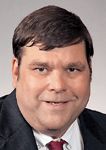- Case-Based Roundtable
- General Dermatology
- Eczema
- Chronic Hand Eczema
- Alopecia
- Aesthetics
- Vitiligo
- COVID-19
- Actinic Keratosis
- Precision Medicine and Biologics
- Rare Disease
- Wound Care
- Rosacea
- Psoriasis
- Psoriatic Arthritis
- Atopic Dermatitis
- Melasma
- NP and PA
- Skin Cancer
- Hidradenitis Suppurativa
- Drug Watch
- Pigmentary Disorders
- Acne
- Pediatric Dermatology
- Practice Management
- Prurigo Nodularis
- Buy-and-Bill
Article
The government and dermatologic surgery: Reimbursements wane, as procedures continue to rise
Government reimbursements for dermatologic procedures are shrinking, while the number of cases of skin cancer continue to rise.

Key Points
Williamsburg, Va. - Major cutbacks have occurred in reimbursement for standard dermatologic surgery procedures, and if extreme care is not taken, institutions such as the Medicare Payment Advisory Commission (MedPAC), the Relative Value Update Committee (RUC) and the Centers for Medicare and Medicaid Services (CMS) will continue this trend.
The percentage of procedures that dermatologists perform has increased dramatically. Statistics show that dermatologic procedures have increased between 1995 and 2005, with biopsies up by 58 percent, destructions by 57 percent, excisions by 16 percent, Mohs surgery by 312 percent and actinic keratoses (AKs) procedures by 158 percent.
"The reality is that there is an epidemic of skin cancer, and nobody wants to pay for it.

Authorities such as RUC and CMS have not yet fathomed the extent of the problem. These bodies seem to want to "punish" the dermatologists who are dealing with the brunt of the skin cancer epidemic for increasing their utilization, Dr. Coldiron says.
"They have taken all our codes that we use for skin cancer and put them through the RUC process, which steadily decreases the value in the payments that dermatologists get. They have already taken every code that we treat cancer with through the RUC review, and they will do it again if they have to, because they see this increase in utilization as being abusive and not as a normal response to an epidemic," Dr. Coldiron tells Dermatology Times.
According to Dr. Coldiron, no good study exists regarding the dramatic rise in skin cancers. Nonmelanoma skin cancer is not a reportable disease, and current data is all based on estimates, which currently are "terrible."
Skin cancer estimates
Estimates say there are 1 million nonmelanoma skin cancers (NMSC) a year, and Medicare data suggests that number is closer to 2.8 million new skin cancers a year.
Dr. Coldiron says that the 6 percent to 8 percent increase in NMSC per year is of epidemic proportion, and this is the reason why the dermatologist utilization of the RVU (relative value unit) has gone up.
The other reason is that dermatologists are finally getting paid for practice expense charges that were not fully reimbursed before.
Fifteen years ago, ear, nose and throat (ENT), plastic and general surgeons operated on most of these skin cancers. This has now changed, and dermatologists are treating most of these skin cancers.
According to Dr. Coldiron, years ago, dermatologists were medical dermatologists, not dermasurgeons. They performed only a biopsy; if results were positive and surgery was required, they would refer patients to a surgeon.
This has all changed, because dermatology is now also a surgical specialty. Because of that, more RVUs are being generated. More than 75 percent of all RVUs (and 75 percent of the income) generated by dermatologists are procedural.
According to Dr. Coldiron, the RUC and CMS bodies are the ultimate cynics and are suspicious. If there is a change, they assume that it is an abusive behavior and not due to an epidemic - or perhaps they know there is an epidemic and don't want to pay for it in times of economic hardship, he says.
"This situation could change if dermatologists could convince MedPAC, Congress and other authorities that there is an epidemic of skin cancer, and logically, you do not punish the people treating an epidemic. You can convince them with solid new data," Dr. Coldiron says.
A skin cancer procedure or treatment cannot be done without a positive biopsy. Almost all biopsies are read by an independent, outside pathologist, and are independently confirmed.
Therefore, the total number of skin cancer procedures is an excellent proxy for the number of skin cancers, which, according to Dr. Coldiron, has recently exploded.
Dr. Coldiron says many dermatologists sit back and allow cuts to happen. Instead, they should become much more active in politics and get to know their congressman and actively support DermPAC.
"Approximately one in 20 AKs is an SCC in situ, which, down the line, will translate into a surgery. Freezing them early saves Medicare a lot more money.
"Furthermore, Mohs is a really cheap solution for NMSC, compared to an excision done in the hospital or an ASC with frozen sections. Mohs is about one-third the cost, and compared to radiation, it is about one-sixth the cost," Dr. Coldiron says.
Dr. Coldiron says one worst-case scenario is that dermatologists will get triaged into a process in which dermatology procedures are reimbursed from a fixed pool of money, and will have to make do with those resources, regardless of the number of skin cancers reported.
"We have got to control our utilization of all these codes until we get the message out that there is an epidemic, because right now, we are perceived as the problem and not the solution," Dr. Coldiron says.





